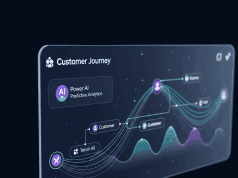In today’s digital landscape, data-driven decision-making is essential for successful marketing and product development. A/B testing is a powerful method that allows businesses to compare two versions of a webpage, email, or advertisement to determine which performs better. However, with numerous A/B testing tools available, choosing the right one for your business can be daunting. This article will guide you through the basics of A/B testing and provide insights into selecting the best A/B testing tool for your needs.
What is A/B Testing?
A/B testing, also known as split testing, involves comparing two variants (A and B) of a single variable to see which one performs better based on a predefined metric, such as conversion rates, click-through rates, or customer engagement. By isolating variables and focusing on one change at a time—like headlines, colors, or layouts—you can gather actionable insights and make informed decisions.
Key Benefits of A/B Testing
- Data-Driven Decisions: Gain insights based on real user behavior rather than assumptions or gut feelings.
- Improved Conversion Rates: Small changes can lead to significant increases in conversions, whether it’s sales, form sign-ups, or downloads.
- User Experience Optimization: Identify elements that resonate with your audience and enhance their overall experience.
- Reduced Risks: Test changes in a controlled environment to minimize negative impacts on your overall performance.
Types of A/B Testing Tools
When considering A/B testing tools, you’ll find several categories, each serving different purposes:
- Dedicated A/B Testing Software: Tools like Optimizely and VWO offer robust features specifically for A/B testing.
- Analytics Platforms with A/B Testing Features: Google Analytics and Mixpanel may include A/B functionalities as part of their larger suite of analytics tools.
- Email Marketing Tools: Platforms like Mailchimp and HubSpot often provide built-in A/B testing capabilities for evaluating email campaigns.
- Website Builders with A/B Testing: Some website platforms, like WordPress with specific plugins, offer A/B testing features directly within their ecosystem.
Factors to Consider When Choosing an A/B Testing Tool
1. Usability
Look for a tool with an intuitive interface that allows your team to easily set up and manage tests without extensive technical knowledge. User-friendly tools will help you run tests efficiently and reduce the learning curve.
2. Flexibility and Customization
Ensure that the A/B testing tool offers flexibility in designing variants. The best tools enable customization of elements like text, images, and layout without requiring deep coding skills.
3. Analytical Capabilities
An effective A/B testing tool should provide comprehensive reporting features. Look for tools that display not only conversion metrics but also user behavior insights and heatmaps to understand how users interact with your designs.
4. Integration with Existing Tools
Consider tools that readily integrate with your current tech stack, such as marketing automation platforms, customer relationship management (CRM) systems, and content management systems (CMS). This will streamline the process of setting up tests and collecting data.
5. Costs and Pricing Models
A/B testing tools come with diverse pricing models—ranging from free, tiered subscriptions to custom enterprise pricing. Assess your budget and choose a tool that delivers the features you need without breaking the bank.
6. Support and Resources
Evaluating customer support, documentation, and educational resources offered by the A/B testing tool is crucial. Robust support can help you make the most of your chosen platform.
Popular A/B Testing Tools to Consider
Optimizely: A leader in the A/B testing space, Optimizely offers an extensive range of features for experiments across web and mobile interfaces.
VWO: VWO provides tools for A/B testing, multivariate testing, and more, along with in-depth analytics capabilities.
Google Optimize: This free tool integrates with Google Analytics and is a great starting point for businesses new to A/B testing.
Unbounce: Focusing primarily on landing pages, Unbounce allows marketers to create and test variations of their landing pages without needing developers.
- Klaviyo: Particularly strong for e-commerce, Klaviyo provides A/B testing features tailored to email marketing campaigns.
Final Thoughts
Choosing the right A/B testing tool is vital for optimizing your marketing efforts and improving user experience. By considering factors such as usability, flexibility, integration capabilities, and support, you can select a tool that aligns with your business goals. Remember, successful A/B testing hinges not only on the tool you choose but also on creating a culture of data-driven decision-making within your organization. Happy testing!








